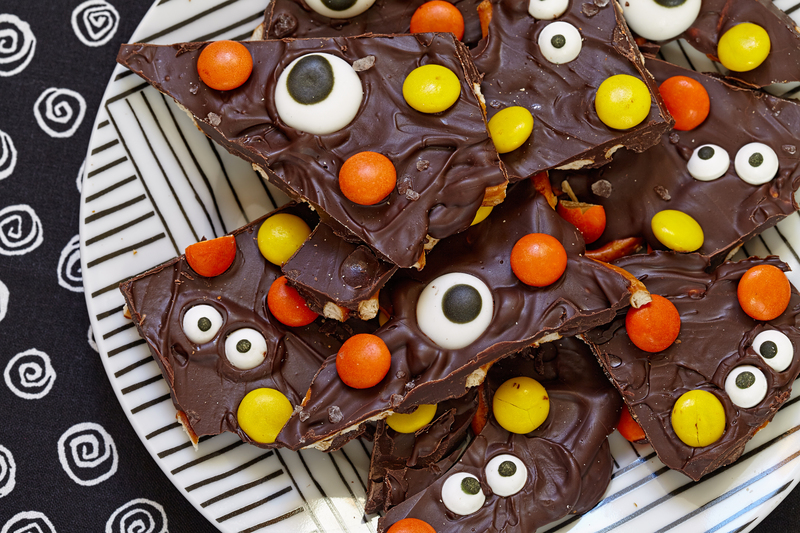Tips and Tricks for Cleaning a Burnt-on Stovetop
Posted on 29/09/2025
Tips and Tricks for Cleaning a Burnt-on Stovetop
Is your stovetop covered in stubborn burnt-on stains that refuse to budge? Worry no more! Whether you have a glass, ceramic, or gas stovetop, this comprehensive guide will help you restore its shine. Let's dive into expert-proven techniques for cleaning a burnt-on stovetop efficiently and safely.
Understanding Different Types of Stovetops
Before you begin cleaning, it's essential to know what kind of stovetop you have. The best tips and tricks for removing burnt-on residue will vary depending on the material. Here's a breakdown:
- Glass or Ceramic Stovetops: These surfaces are sensitive to abrasives and require a gentle touch.
- Gas Stovetops: Typically feature removable grates and burners, making deep cleaning easier.
- Electric Coil Stovetops: Coils are removable, but the pans underneath often collect spills and burnt food.

General Preparation for Cleaning a Burnt-on Stovetop
Safety comes first! Always ensure your stovetop is switched off and completely cool. Remove all cookware, utensils, and detachable components before starting.
- Remove Removable Parts: Take off burners, grates, and knobs where applicable. Soak them in warm, soapy water to loosen grime.
- Initial Wipe: Use a damp cloth to remove loose debris and spills. This step prevents further scratching during the deep clean.
Now you're ready for deeper cleaning based on your specific stovetop type!
How to Clean Burnt-on Residue from Glass or Ceramic Stovetops
1. Using Baking Soda and Vinegar
Baking soda and white vinegar are powerful yet gentle solutions for cleaning a burnt-on stovetop. Both are natural, inexpensive, and free of harsh chemicals.
- Mix and Apply: Sprinkle a generous amount of baking soda over the burnt-on stains. Spray or drizzle white vinegar on top, creating a fizzing reaction that helps break up grime.
- Wait: Allow the mixture to sit for 10-15 minutes. This soaking period helps loosen stubborn residues.
- Wipe Gently: Use a soft, non-abrasive sponge to wipe away the dissolved stains in a circular motion. For tough spots, repeat the steps or let the mixture sit longer.
- Rinse: Wipe with a damp microfiber cloth to remove any residue, leaving your glass stovetop sparkling clean!
2. The Power of a Razor Scraper
For truly stubborn, burnt-on messes that won't budge, a razor blade scraper can be an invaluable tool. Always use caution!
- Hold the blade at a 30-degree angle and gently scrape away the residue, being careful not to gouge the glass or ceramic surface.
- Follow up by wiping the area with a soapy sponge or microfiber cloth.
Tip: Never use a razor scraper on metal or painted surfaces, as this can cause scratches or damage.
3. Store-Bought Cleaners for Glass and Ceramic Stove Tops
Many brands make specialized stovetop cleaners designed for glass and ceramic surfaces. Look for non-abrasive formulas and always follow the manufacturer's instructions.
- Apply the cleaner, allow it to sit, then wipe with a soft cloth or sponge.
- Rinse thoroughly to prevent residue buildup.
How to Clean Burnt-on Messes from Gas and Electric Stovetops
1. Removing and Soaking Grates and Burners
Gas stovetops often accumulate burnt food and grease around burners and grates. Here's how to tackle these challenges:
- Soak: Place grates and burners in a sink filled with hot, soapy water. Add a scoop of baking soda for extra cleaning power.
- Scrub: After soaking for 15-30 minutes, use a non-abrasive brush or sponge to scrub away burnt-on debris. For tough stains, make a paste of baking soda and water and apply directly before scrubbing.
- Rinse and Dry: Make sure all parts are dry before reassembling to prevent rust or electrical issues.
2. Cleaning the Stove Surface
For the main surface, avoid harsh steel wool or metal scouring pads. Instead:
- Baking Soda Paste: Mix 1 part baking soda with 1 part water. Apply the paste directly to burnt areas and let it sit for 20 minutes, then wipe away with a damp cloth.
- Degreasing Sprays: For greasy buildup, use a degreasing kitchen spray and a microfiber cloth for safe, efficient cleaning.
If stains persist, repeat as necessary or try a mixture of baking soda and hydrogen peroxide for extra power.
Homemade, Eco-Friendly Burnt-on Stovetop Cleaner Recipes
Many effective solutions for cleaning burnt-on stove tops can be created with everyday pantry items. Here are some options:
- Lemon Juice and Baking Soda: The acidity of lemon combined with baking soda's gentle abrasiveness helps remove scorch marks while leaving a fresh scent.
- Hydrogen Peroxide and Baking Soda: For white stovetops, combine these two for a fizzing action that penetrates burnt food and lifts it away.
- Salt and Vinegar Paste: Sprinkle salt over the burnt area, add vinegar to make a paste, and scrub gently. Perfect for scrubbing out tough spots on most stovetops.
Tips for Preventing Burnt-on Stovetop Stains
Prevention is key! By adopting a few simple habits, you can minimize burnt-on messes and the need for deep cleaning:
- Clean Spills Immediately: Wipe up spills as soon as it's safe, while they are still fresh and easy to remove.
- Use Proper Cookware: Avoid oversized pots or pans that boil over easily.
- Monitor Cooking Temperatures: Keep heat at recommended levels to prevent food from burning onto the stovetop.
- Perform Regular Light Cleaning: Quickly wipe the surface daily to prevent buildup, making deep cleans less frequent and easier to manage.
Common Mistakes to Avoid When Cleaning a Burnt-on Stovetop
For the best results (and to protect your stovetop from damage), beware of these common pitfalls:
- Using Abrasive Cleaners: Products like steel wool or harsh scrub pads can scratch delicate surfaces, especially glass or ceramic cooktops.
- Letting Spills Sit: Dried-on messes get tougher over time, making cleaning more challenging.
- Skipping the Cooling Step: Hot stovetops not only pose a burn risk, but cleaners can evaporate or even react with heat, leaving irreparable marks.
- Overusing Water: Flooding electric or gas burners with water can cause damage or short circuits.
- Ignoring Manufacturer's Instructions: Always check your appliance manual for specific cleaning recommendations and prohibited substances.
Frequently Asked Questions About Cleaning Burnt-on Stovetops
What is the best cleaner for burnt-on food on a stove top?
Baking soda and vinegar is a time-tested combination for most stovetop surfaces, offering powerful stain removal without harsh chemicals. For glass or ceramic, specialized store-bought cleaners are also effective.
How do you get heavy burns off a stove top?
Letting a baking soda/vinegar paste sit for 10-30 minutes works well. For very tough burns, carefully use a razor blade scraper (only on glass or ceramic) or repeat the soaking and scrubbing process.
Can you use a magic eraser on a burnt stovetop?
Magic erasers can be effective, especially for ceramic and enamel surfaces, but test on a discreet spot first to ensure no scratching occurs.
How often should I deep clean my stovetop?
For busy kitchens, a deep clean every two weeks is recommended. Frequent, light cleaning makes the job much easier!

Professional Tips for a Gleaming Stovetop
- Polish with Vinegar: For a streak-free finish on glass or ceramic tops, follow up cleaning by wiping the surface with white vinegar and buffing with a dry microfiber cloth.
- Protect with a Cooktop Cream: After cleaning, apply a cooktop buffing cream (available at appliance stores) to shield against future stains.
- Use Trivets and Drip Pans: On gas stoves, adding drip pans beneath burners catches spills before they become a problem.
- Let Soak Overnight: For extreme cases, cover burnt-on spots with a wet towel or paste and let them soak overnight before scrubbing the next day.
Summary: Restore Your Stovetop with These Burnt-on Cleaning Secrets
Cleaning a burnt-on stovetop doesn't have to be a nightmare. With these expert tips, smart cleaning tricks, and a little patience, you can restore any stovetop--glass, ceramic, gas, or electric--to sparkling condition. Remember to always use the right tools for your appliance, avoid the most common cleaning mistakes, and practice prevention to minimize future burnt-on messes. Your stovetop will thank you!
Explore our other housekeeping tips and guides to keep every part of your kitchen as clean and inviting as your freshly restored stove.



